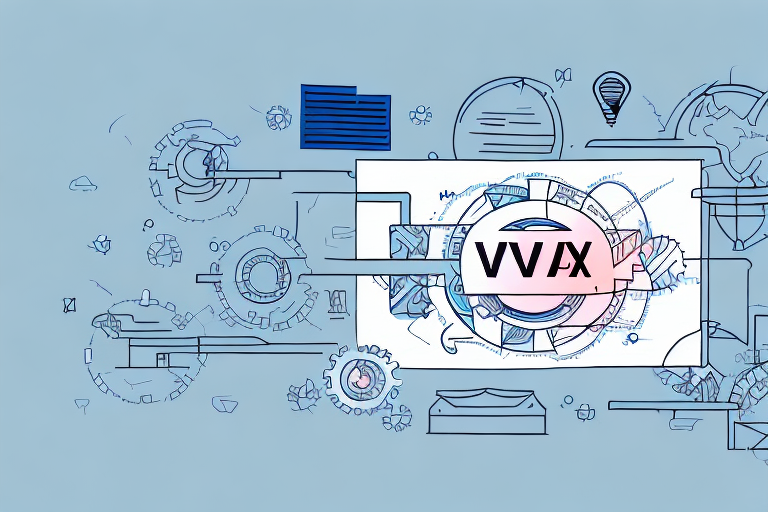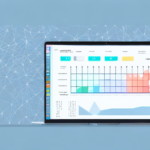How to Obtain a VAT Number for Your Supply Chain
Value-added tax (VAT) is a consumption tax levied on goods and services at each stage of the supply chain. For business owners in the UK, EU, or any VAT-implementing country, understanding VAT is crucial for efficient supply chain operations. This comprehensive guide outlines the steps, requirements, and common pitfalls in obtaining a VAT number for your business.
Understanding VAT and Its Importance for Your Supply Chain
VAT is calculated as a percentage of the sale price and is ultimately paid by the final consumer. Its primary purpose is to generate government revenue while ensuring businesses contribute to the economy.
- Cost Reduction: Reclaiming VAT on business purchases lowers your overall expenses.
- Credibility: A VAT number enhances your business's credibility among customers, suppliers, and stakeholders.
- Trade Facilitation: Enables seamless trading with other VAT-registered businesses without incurring additional costs.
In the UK, businesses with a turnover exceeding £85,000 must register for VAT. Registration not only signifies business growth but also makes your company more attractive to investors.
According to the HMRC VAT statistics](https://www.gov.uk/government/publications/vat-statistics/vat-statistics), VAT contributions significantly bolster government revenues, emphasizing the importance of compliance.
Who Needs a VAT Number? A Guide to VAT Registration
Businesses with a turnover above the VAT threshold (£85,000 in the UK) are mandated to register for VAT. However, even below this threshold, voluntary registration can offer benefits such as enhanced business credibility and the ability to reclaim VAT on purchases.
To register, complete the VAT registration form (VAT1) available on the HM Revenue and Customs (HMRC) website. The registration process typically takes around two weeks, though complexities in your business may extend this duration.
Post-registration, businesses must charge VAT on taxable goods and services and submit regular VAT returns to HMRC. Maintaining accurate records and timely submissions are essential to avoid penalties.
Step-by-Step Guide: How to Obtain a VAT Number for Your Business
Follow these steps to obtain a VAT number:
- Assess VAT Requirements: Verify if your turnover exceeds the £85,000 threshold.
- Access HMRC Portal: Navigate to the HMRC website and complete the online VAT registration form (VAT1).
- Submit Application: Electronically submit your application and await confirmation.
- Provide Additional Information: Respond promptly to any HMRC requests for further details.
- Receive VAT Certificate: Upon approval, receive your VAT registration certificate detailing your VAT number and registration date.
Ensure your application is complete and accurate to prevent delays. Once registered, regular VAT returns detailing your VAT transactions must be submitted to HMRC.
Common Mistakes to Avoid When Applying for a VAT Number
Avoid these common pitfalls during the VAT registration process:
- Incomplete Information: Ensure all application details are accurate and complete.
- Delayed Registration: Register promptly if your turnover exceeds the threshold.
- Poor Record-Keeping: Maintain accurate VAT records and adhere to submission deadlines.
- Improper VAT Claims: Only claim VAT on legitimate business expenses.
- Ignoring VAT Schemes: Understand and choose the VAT scheme that best fits your business needs.
Understanding applicable VAT rates for your products or services is crucial to avoid overcharging or undercharging customers.
Stay updated with VAT regulation changes to ensure ongoing compliance and avoid penalties.
Required Documents for VAT Number Application
Gather the following documents when applying for a VAT number:
- Your company registration number (if applicable)
- Business bank account details
- Descriptions of goods or services supplied
- Last 12 months' turnover figures
- Details of claimed business expenses
Note that requirements may vary by country. Some jurisdictions might request additional documents like proof of residency or tax identification numbers.
Consulting with a tax professional or accountant is advisable to ensure you have all necessary documentation.
Processing Time for Obtaining a VAT Number
The standard processing time for a VAT number is approximately two weeks via HMRC. However, this can vary based on application complexity and completeness.
Provide accurate information to avoid delays. Non-UK residents may experience extended processing times due to additional verification requirements.
For detailed HMRC processing times, refer to the HMRC official guidance.
Choosing the Right VAT Registration Scheme for Your Business
HMRC offers several VAT schemes tailored to different business needs:
- Standard VAT Accounting Scheme: Suitable for most businesses, requiring regular VAT return submissions.
- Flat Rate VAT Scheme: Simplifies VAT calculations by applying a fixed percentage to turnover.
- Annual Accounting Scheme: Allows businesses to make advance VAT payments based on estimated annual VAT liability.
Additional schemes include:
- VAT Cash Accounting Scheme: Pay VAT based on cash received from customers, improving cash flow management.
- VAT Margin Scheme: Applicable for businesses dealing in second-hand goods, art, or collectibles, taxing the difference between purchase and sale prices.
Selecting the appropriate scheme can optimize your VAT obligations and financial management.
Maintaining VAT Compliance and Keeping Your VAT Number Active
To maintain an active VAT number and ensure compliance:
- Keep accurate VAT records and submit returns punctually.
- Charge the correct VAT rates on all taxable goods and services.
- Reclaim VAT on eligible business purchases.
- Notify HMRC of any business changes affecting VAT registration status.
Ensure compliance with varying VAT rates for different products or services by consulting the HMRC VAT rates guide.
If trading with EU customers post-Brexit, verify if VAT registration is required in their respective countries to adhere to distance selling regulations.
Benefits of Having a VAT Number for Your Business and Supply Chain Operations
- Lower overall costs through VAT reclaim on business purchases.
- Enhanced business credibility and trustworthiness.
- Facilitated trading with other VAT-registered entities without additional costs.
- Streamlined VAT obligations, simplifying supply chain management.
Handling Transactions with Non-VAT Registered Suppliers or Customers
When dealing with non-VAT registered parties:
- Do not charge VAT on sales to non-VAT registered customers.
- Do not claim VAT on purchases from non-VAT registered suppliers.
- Ensure invoices clearly state whether VAT is included.
Clear invoicing practices help maintain transparency and compliance.
Impact of Brexit on Obtaining a VAT Number for UK and EU Businesses
Post-Brexit, UK and EU businesses must obtain separate VAT numbers for each operating country. UK businesses importing goods into the EU now require VAT registration in each customer country.
Seek professional advice to navigate the complexities introduced by Brexit and ensure compliance with the new VAT obligations.
For more details, visit the HMRC post-Brexit VAT guidance.
By following this guide, you can efficiently obtain a VAT number, maintain compliance, and leverage VAT benefits to enhance your supply chain operations. Remember to keep meticulous records, stay informed about regulatory changes, and choose the VAT scheme that best aligns with your business needs.






















